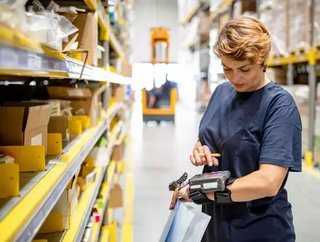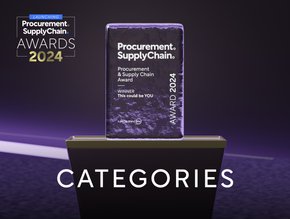Adjuno: what goes around comes around

David Griffiths, Senior Product Marketing and Strategy Manager, Adjuno, explains how by investing in transit packaging brands can reduce costs, warehouse requirements and improve their levels of sustainability.
Transit Packaging is a hidden cost when it comes to retail. It may seem like a simple problem, but in reality, it’s not that easy to solve. Aside from the initial cost of the materials and testing iterations, there’s also the cost of container optimisation - a challenge in itself when brands can have over 20,000 transit packaging options to their name. Once they have served their purpose, warehouse teams often cast aside the packaging remnants and send them to landfill, but what if retailers took a cyclical approach?
The Hidden Treasure Trove
Efficiency is key for retailers, but often sustainable initiatives are seen as soft efficiencies, when in fact, not engaging in these practices could be costing organisations more than their reputation. Retailers who have addressed their environmental and surplus transit packaging issues have unearthed multimillions within the first few months.
This isn’t just about reducing the number of boxes, it’s about addressing carton fill, increasing container load and reducing the amount of space required to store stock through pallet optimisation. Inventory is something that many UK retailers are currently struggling with as they battle against, or even give into the temptation to stockpile products in the fear of a no-deal Brexit. One retailer even forecasted their spend on stockpiling to be around £8m.
Rather than opening new warehouses and piling in products in order to cope with the consumer demand, retailers should be better managing their processes through streamlining their transit packaging. This means controlling the materials, sizes and weights of packages from beginning to end, which requires complete supply chain visibility and good supplier relationship management.
Putting it into Practice
The first step towards putting better packaging processes into practice is to bring the whole team together and commit to changing the way packaging is approached. Too often the best of intentions get lost amongst the realities of stretched time and resources, with bad practices creeping back in. Once everyone is aligned, each step of the transit packaging journey can begin to be fully revealed and reviewed.
It always starts with the raw materials. While retailers regularly shout about the sustainable and eco-friendly materials their consumer facing packages are composed of, they rarely extend this to their transit packaging. As well as benefiting the environment and worker conditions, investing in transit packaging materials with the same dedication to sustainable and ethical practices as consumer packaging, allows retailers to appeal to more conscious consumers.
Consumers are taking an active role in investigating the inner workings of the supply chain behind their products, engaging with campaigns such as #whomademyclothes. While more retailers are disclosing information about their suppliers, packaging often falls down the list when it comes to transparency, with policies and aims kept in the background. It’s important that all of the purchasing barriers are removed for the conscious consumer, and knowing a particular retailer prides itself on sustainability throughout the supply chain will encourage them to purchase and return again. While it may feel like transit packaging is a behind the scenes element, with more retailers starting to share in-depth information with their consumers through website trackers, social media content and advertising, its important to promote packaging initiatives in the same manner in order to reassure consumers and stave off the competition.
SEE ALSO:
-
The Warehouse Group: driving omnichannel retail through supply chain innovation
-
MACMobile: 'just in time' is key to optimising the FMCG supply chain
The waste from transit packaging can also be a lost cost. By making packages sustainable and reusable, brands can exercise a cyclical process. Rather than creating a tower of waste in the corner of a warehouse, each package should be made from resistant materials that can be used to repackage returns, or surplus items. Compactors or bailers can also help to utilise warehouse space and can even bring in extra funds should the contents be sold to recyclers, but most importantly still giving back to the ecosystem.
While the transit packaging itself may be sustainable, the environmental costs of transit packaging can go awry, as the pollution from transporting goods is considerable. The industry is aware of the problem, with influential groups such as the International Maritime Organisation,aiming to cut carbon emissions by at least half by 2050 with its international agreement. Advances in technology are also making some headway in reducing the C02 and oxide omissions that stem from container ships and vehicles, but what’s on the inside counts just as much. Carbon savings come from not only reducing the volume of packaging but also through shipping less empty space in individual cartons and containers. Retailers need to standardise their packaging options and sizes, and partner with collaborative suppliers to guarantee that containers are fully optimised.
To solve these issues, complete visibility of the supply chain is vital. Using cloud based technology, retailers can approve or reject any transit packaging options and ensure suppliers use the correct packing to produce the right results. Through this system retailers can cross check the size and weight of each box being packed onto a container and calculate the environmental and financial impacts this will have. The tech is there to help retailers and suppliers but everyone needs to be committed to the overall goal, reducing expenditure and the environmental impacts of packaging.
Keeping the Wheels Turning
Consumers are increasingly looking for more sustainable brands to invest in and are interested in the journey their items have taken end to end. Retailers who pride themselves on sustainability and being environmentally friendly should broadcast their packaging values and instill trust.
Packaging efficiency isn’t a nice to have, it’s an essential. To manage this area successfully, teams need to consider the full packaging cycle, from beginning to end. Materials, sizes, weights and reuse or recycle opportunities. As retailers try to consolidate their costs and meet the heightened consumer demands and expectations, this overlooked element of the supply chain should come to the forefront. Full visibility is needed throughout the supply chain to facilitate this, as both internal and external compliance to the new rules is needed.
Having the right technology in place to be able to guide new processes and keep things on track is vital. But it’s not just about the software. Having the tools to hand is the start, however, having everyone in the organisation believing and committing to the process is of insurmountable importance.






